| Dioscorea bulbifera (Air Potato) |

|
Native to Asia & Africa, Introduced in the USA in 1905, has currently invaded Alabama, Florida, Hawaii, Louisiana, Mississippi, Puerto Rico and Texas and has been classified as Category I invasive weed.

EDD Map 2014: Please note that some of the plants reported in this map may have been mis-identified by the reporters of the EDD map.
Vines climb, blanket and smother supporting vegetation and kill plants underneath and while producing vegetative propagules called bulbils. Bulbils are produced on vines during Summer-early Fall drops from the vine, sprouts during ensuing spring, grows up to a 20 m long vine (up to 25 cm/day cumulative growth rate) that climbs on supporting physical structures and (fences, electric poles etc.) and vegetation, bear over 300 bulbils during 7-9 month growing season. Almost all (99%) of the climbing vines die during late fall and re-sprout from yam-like perennial underground structures called tubers as well as fallen bulbils form the previous growing season. This cycle is repeated every year and the vine patches keep expanding affecting the physical structures and native vegetation.
Fast growth rate associated with an extraordinary seasonal vine length carrying a large number of highly potent propagules have been identified to be air potato plant’s aggressive attributes North America. USDA/ARS developed a self-perpetuating, economically viable and environment-friendly (currently this word may not be appropriate) method called biological control (use of an organism to control or manage of the population of another aggressive organism) for managing this weedy vine in southeast United States. This program imported a highly host specific lily beetle from Asia, conducted vigorous tests, determined to be very specific to air potato plants and dispersed them throughout its distribution range in of the USA (beginning 2011) by setting up a collaborative efforts with the Florida Department of Agriculture and University of Florida as a part of USDA’s technology transfer program. These beetles have proven to be very efficient in damaging vines, reducing bulbil production and liberating native plants from air potato’s smothering effects within 5-years of field releases. These beetles have begun to help manage air potato vines in southern Georgia, Louisiana and Alabama.
Preliminary research data have shown:
Over 90% reduction in bulbil production due to damage of the vine even before bulbil initiation on vines.
Plant species diversity in infested site have significantly increased due to removal of air potato vines’ smothering effects.
As of 2017, beetles have widely spread and established (self-perpetuated from one year to another) among most (over 80%) air potato infested sites in Florida and begging to spread due to self or human efforts where air potato infestations are found.
These data will be updated as they are analyzed and data become available for this website.

June 2012--- An air potato infested research site in Alachua County, FL: Vegetation smothering effects of air potato vines at the time of the release of air potato leaf-eating beetles.
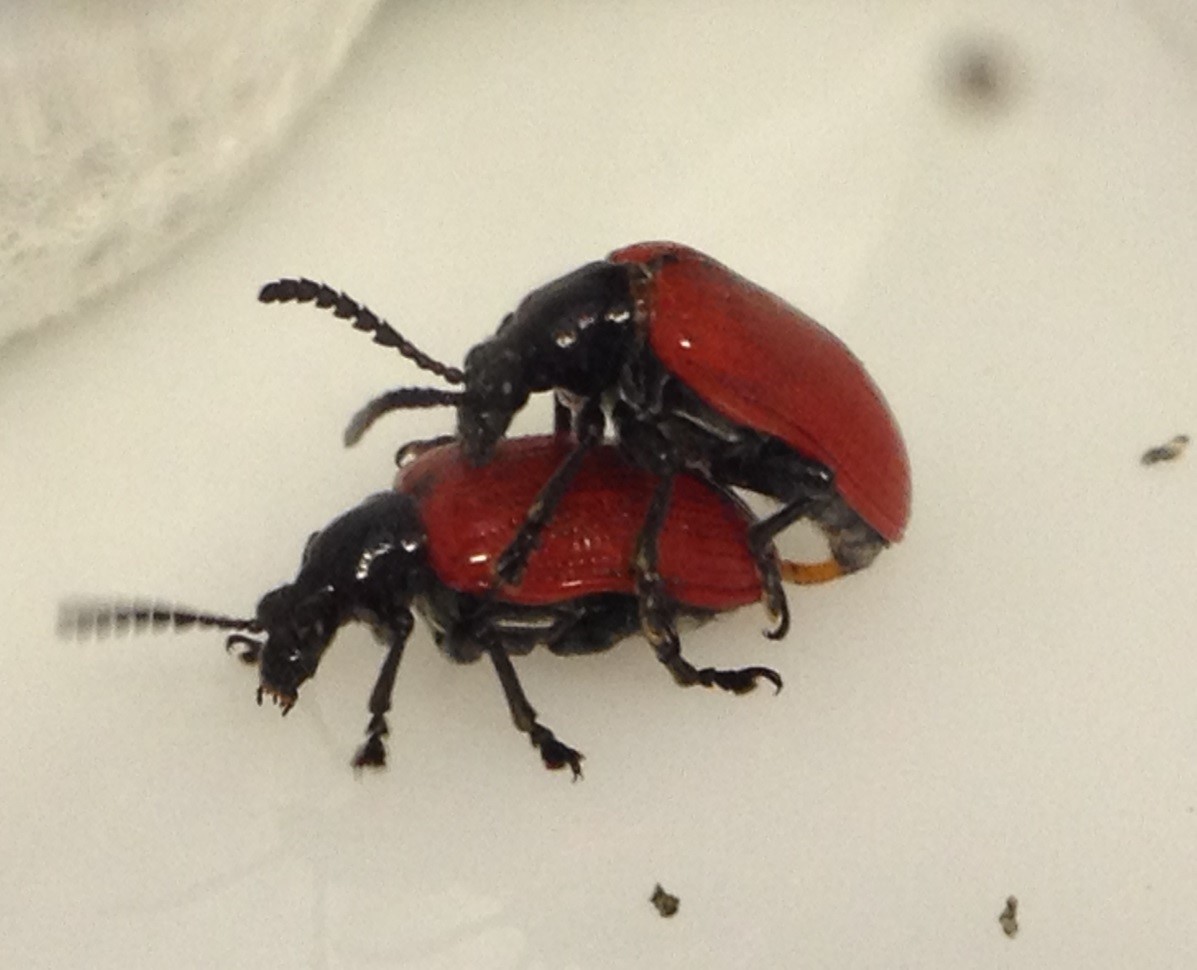

Note: Adults and larvae of air potato beetle.
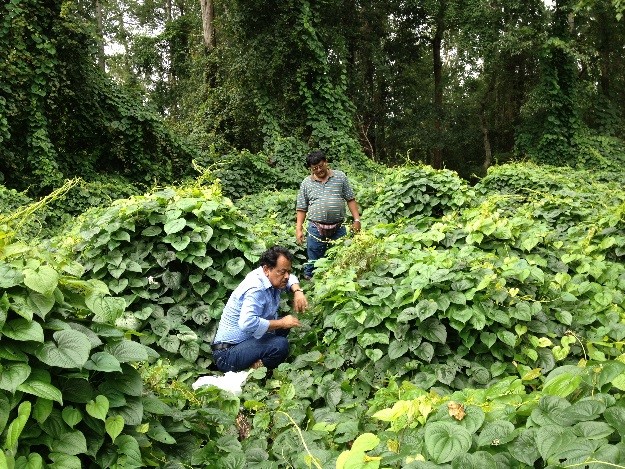
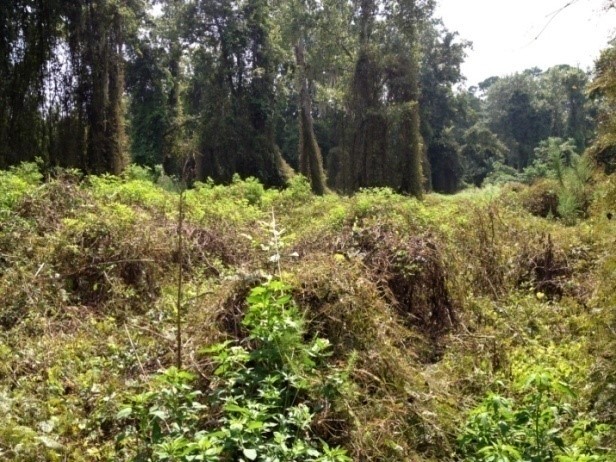
August 2013—Note: Picture 1. Foreign collaborators from the country of air potato beetle’s origin are examining the beetle damage in the site.
Picture 2. Beetle damaged leafless air potato vines and native plants emerging from air potato smothering effects.
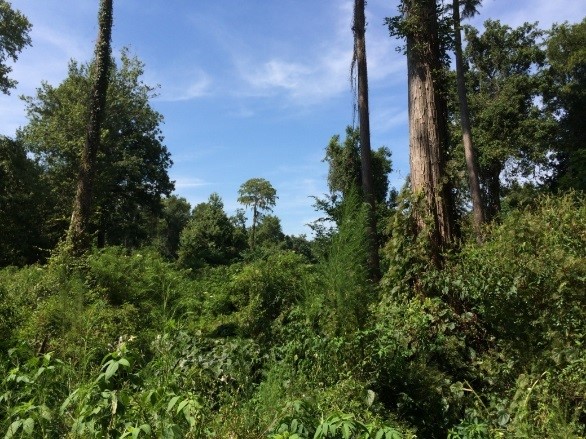
August 2014 -- Note: very few air potato vines (hard to see) overgrown by mostly native plants.
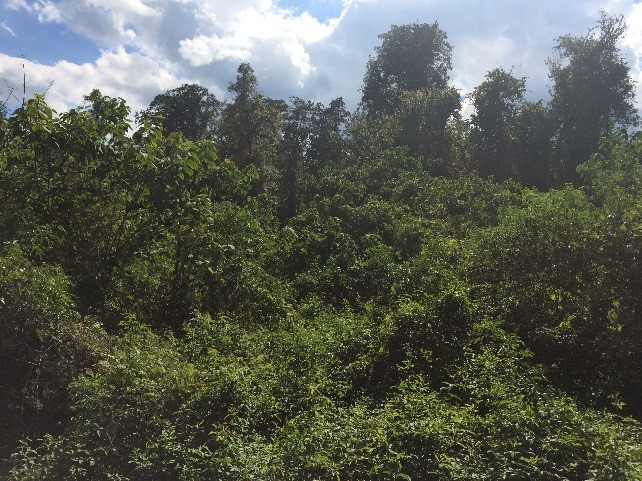
September 2016—Note almost air potato vine free plants in the land scape. Air potato leaf-feeding beetles were well established in the site.
USDA Laboratory, Florida Students Release Beetles to Combat Invasive Vine in Florida
